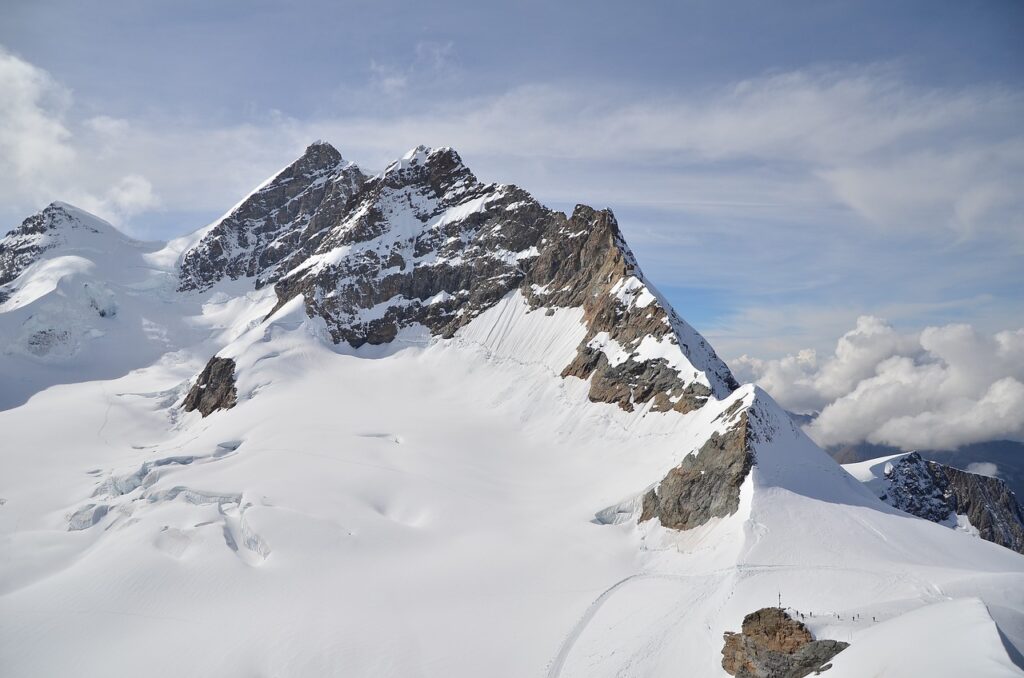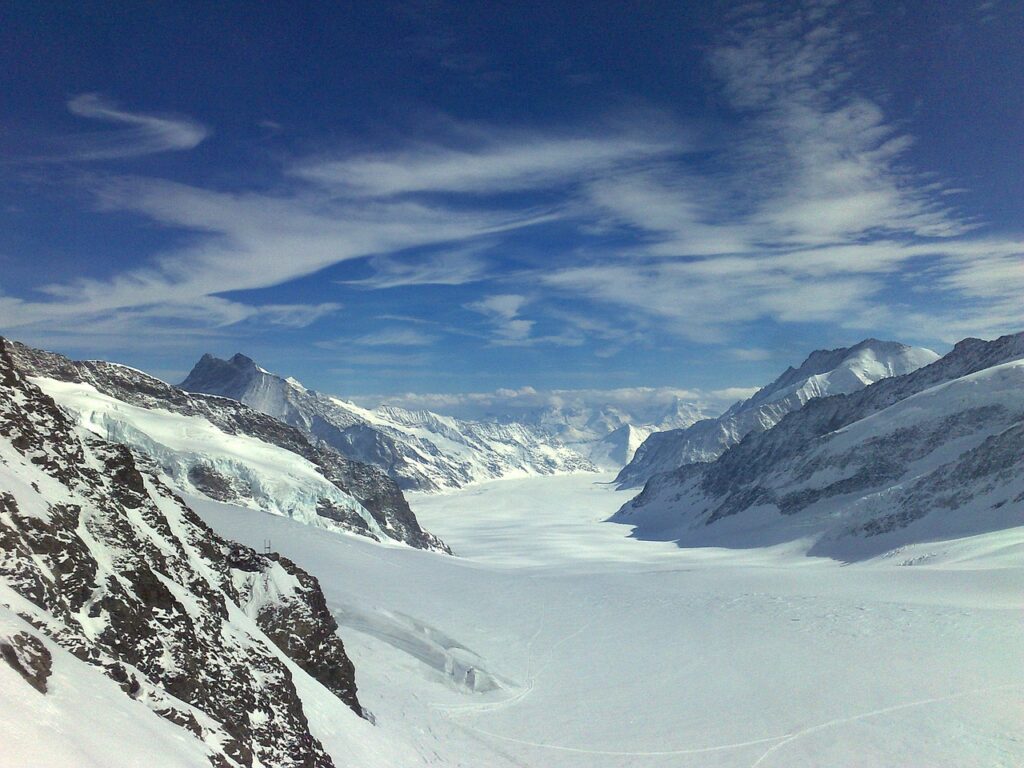Top of Alps
The Alps formed around 30–40 million years ago as a result of the collision between the African and Eurasian tectonic plates. This geological process created the mountain range that today spans eight countries: France, Switzerland, Monaco, Italy, Liechtenstein, Austria, Germany, and Slovenia. The Alps have been inhabited since prehistoric times and served as a natural barrier between Mediterranean and Northern European civilizations in antiquity. One of the most famous historical events is Hannibal’s crossing of the Alps with elephants in 218 BC. During the Middle Ages, the region became a vital trade corridor, with strategic passes like the Gotthard and Brenner. In the 19th and 20th centuries, the Alps became the birthplace of modern mountaineering, starting with the first ascent of Mont Blanc in 1786. Today, the Alps are a symbol of Europe’s wild beauty and a major hub for tourism, winter sports, and adventure.
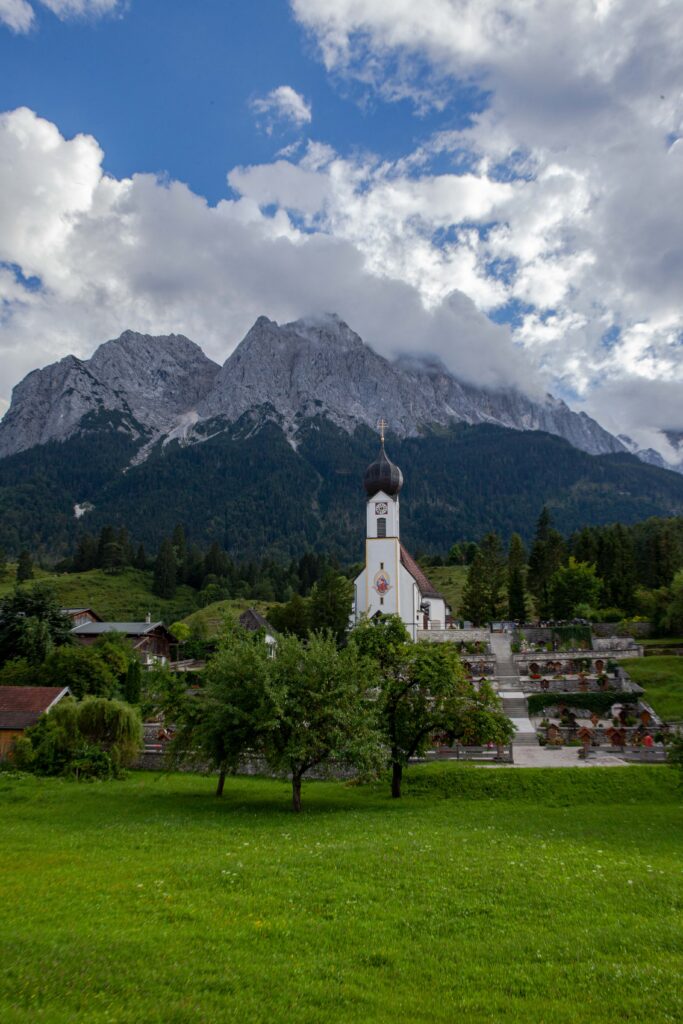
Top 10 peaks in the Alps
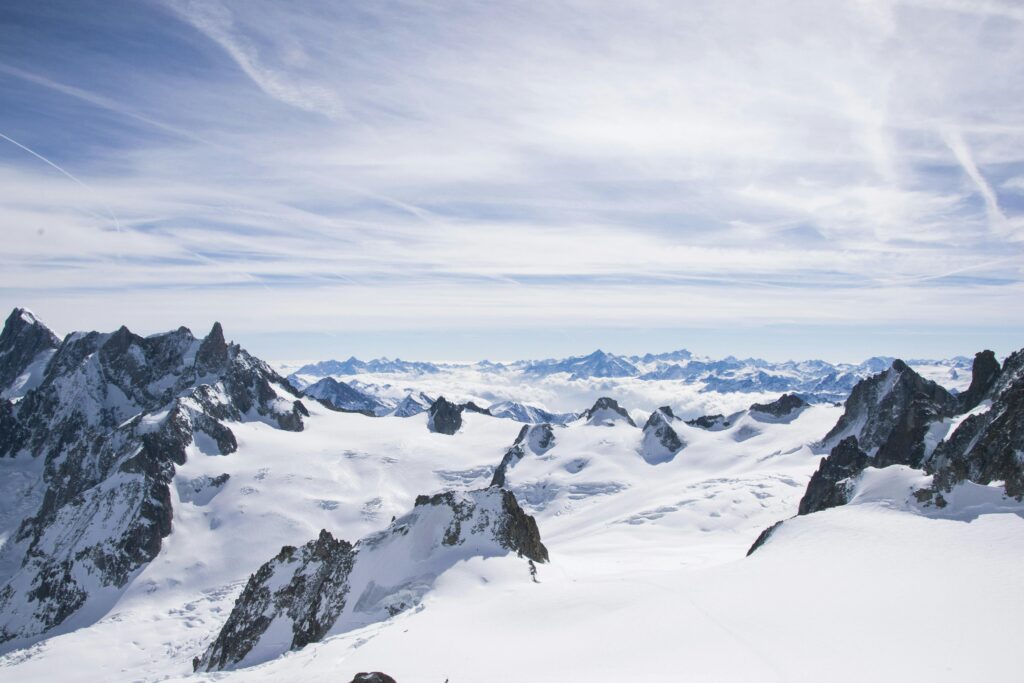
1. Mont Blanc
Mont Blanc (4,808 m) is the highest peak in the Alps, located on the border between France and Italy. It is an iconic destination for mountaineering, skiing, and hiking. The Tour du Mont Blanc trail circles the massif through France, Italy, and Switzerland. Main access points are Chamonix (France) and Courmayeur (Italy). The Aiguille du Midi cable car from Chamonix reaches 3,842 m, offering breathtaking views. On the Italian side, the Skyway Monte Bianco ascends to Punta Helbronner. The surrounding glaciers, like Mer de Glace, are among the largest in Europe. The first recorded ascent was in 1786, marking the birth of modern alpinism.
2. Monte Rosa
Monte Rosa (4,634 m) is the second-highest peak in the Alps and the highest mountain in Switzerland. The tallest summit, Dufourspitze, lies entirely within Swiss territory. Monte Rosa straddles the Swiss-Italian border and is known for its dramatic alpine scenery and vast glaciers. Key access points are Zermatt (Switzerland) and Gressoney/Alagna Valsesia (Italy). Ascents often start from Monte Rosa Hut or Rifugio Gnifetti. The region is a hotspot for high-altitude mountaineering, alpine skiing, and glacier trekking. Monte Rosa features one of the longest ski descents in Europe, from summit to Zermatt. Due to its elevation and remoteness, it requires strong technical and physical preparation.
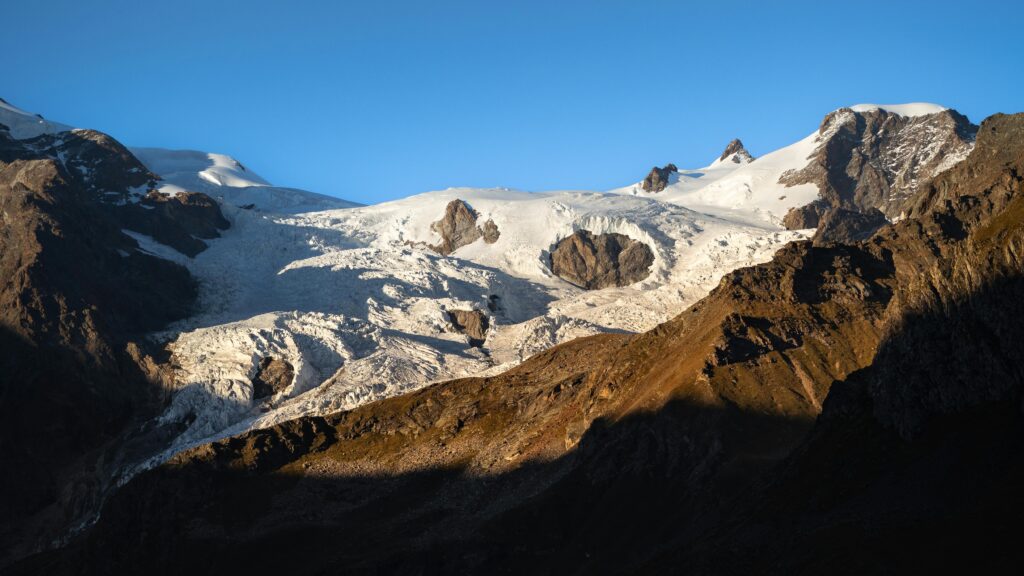
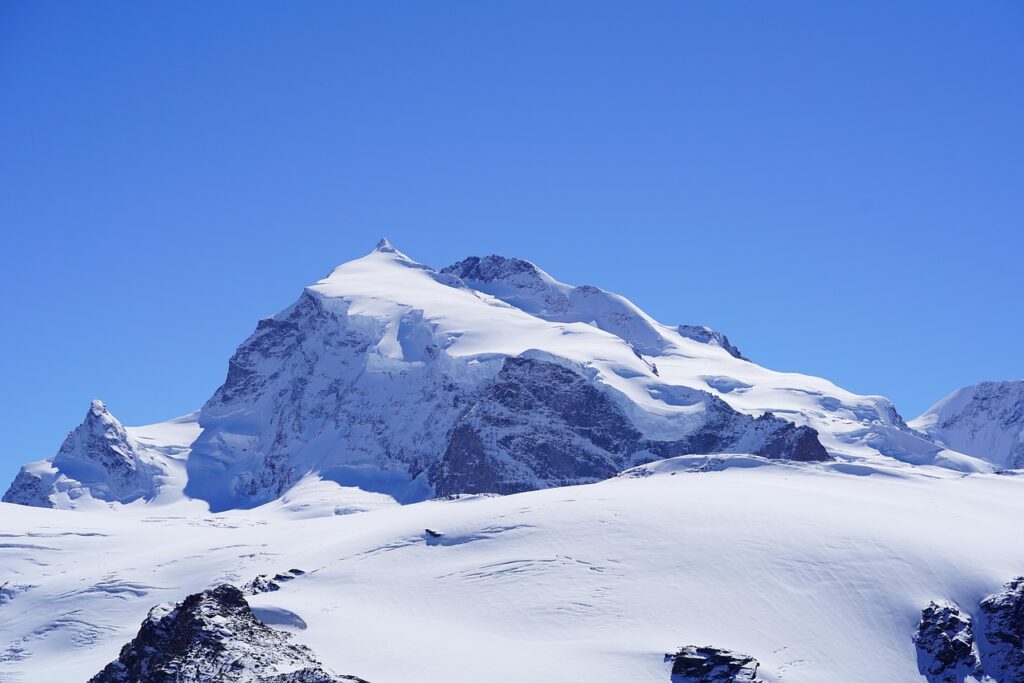
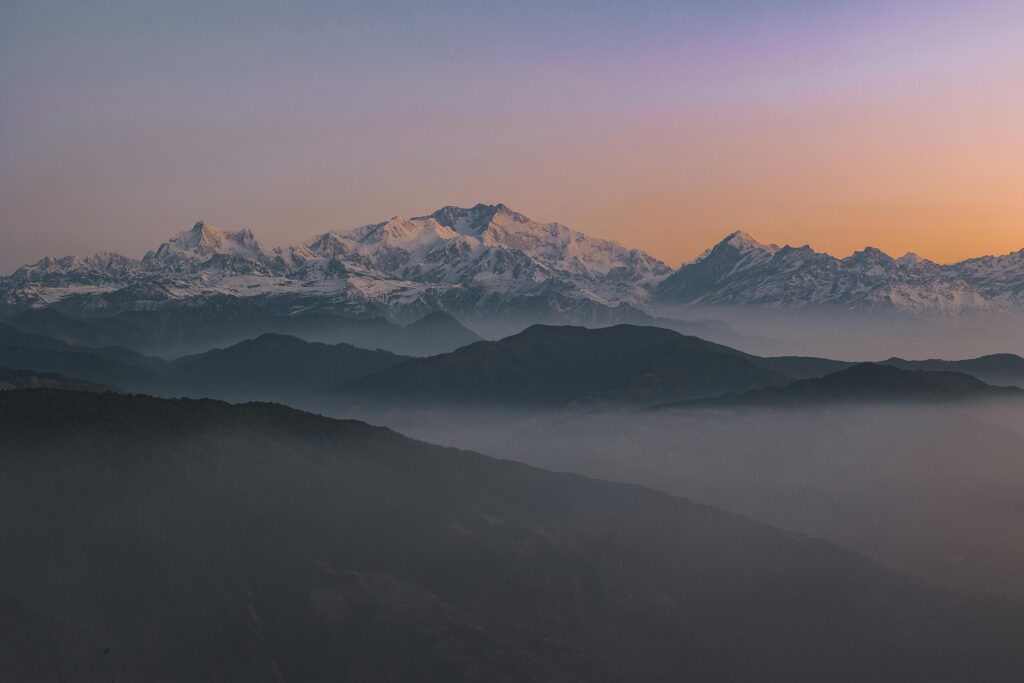
3. Dom
Dom (4,545 m) is the highest mountain located entirely within Switzerland. It belongs to the Mischabel range, rising above the resort town of Saas-Fee, and is a classic alpine summit. While not extremely technical, the climb demands solid physical fitness and glacier experience. The standard route begins at the Domhütte (2,940 m), a mountain hut accessible from Randa. The summit offers sweeping views of the Monte Rosa massif and Weisshorn. Less crowded than peaks like Mont Blanc or the Matterhorn, Dom provides a more remote alpine feel. The area is also popular for spring ski tours. Dom is often used as training for harder climbs in the Alps.
4. Liskamm
Liskamm (4,527 m) is a striking peak in the Monte Rosa massif, straddling the border between Switzerland and Italy. It consists of two summits: Eastern Liskamm (the main peak) and Western Liskamm, connected by a dramatic ridge. The mountain is famous for its narrow, exposed ridge and the hidden danger of cornices – earning it the nickname “the man-eater” during the golden age of alpinism. Classic routes start from Rifugio Gnifetti or the Monte Rosa Hut. The ascent is reserved for experienced climbers comfortable with mixed terrain and glacier travel. Liskamm provides breathtaking views of nearby peaks like Castor, Pollux, and Dufourspitze. It’s a thrilling option for those seeking a technical alpine challenge in the heart of the Alps.
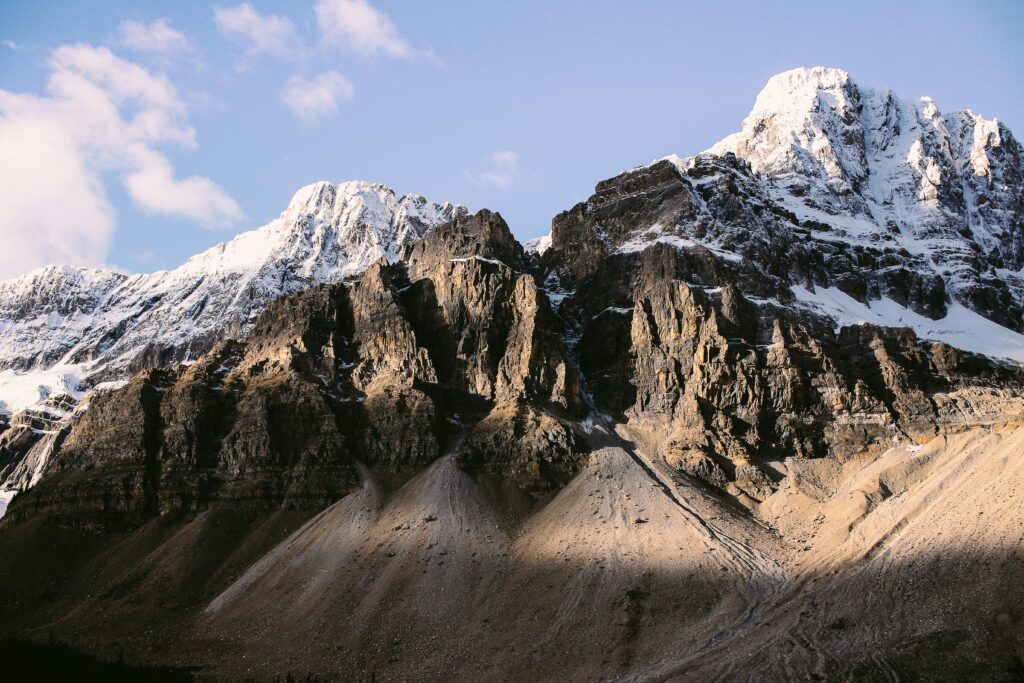
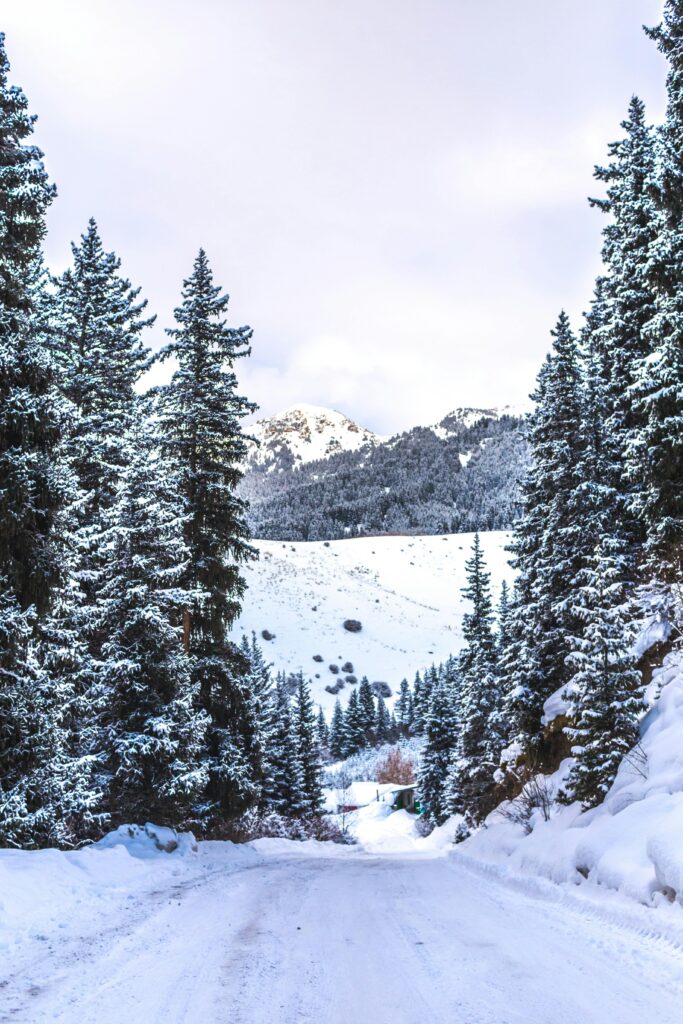
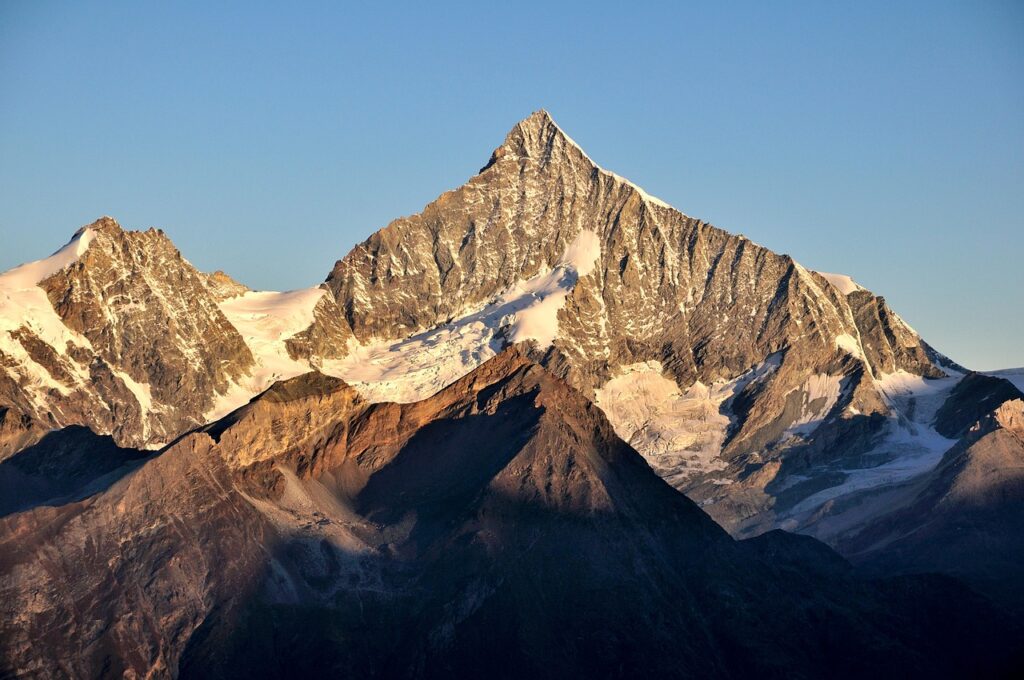
5. Weisshorn
Weisshorn (4,506 m) is regarded as one of the most beautiful and elegant peaks in the Alps. Located in the Valais region of Switzerland, just north of Zermatt, it stands out for its perfectly pyramidal shape. Often compared to the Matterhorn, it is taller, more remote, and technically more challenging. The classic route follows the east ridge, starting from the Weisshorn Hut (2,932 m). The ascent involves mixed rock and glacier terrain, requiring strong alpine skills. Due to its position, it offers sweeping views of the entire Alpine range. Less frequented than other iconic peaks, it delivers a wilder, more solitary mountain experience. Weisshorn is considered a true test, even for experienced climbers.
6. Matterhorn
Matterhorn (4,478 m) is one of the most iconic and recognizable peaks in the world, known for its perfect pyramid shape. It straddles the border between Switzerland and Italy, towering above the resort of Zermatt. The classic ascent follows the Hörnli Ridge, but includes technical and exposed sections, requiring alpine experience. The first ascent in 1865 ended tragically, with four climbers dying during the descent. Matterhorn became a symbol of Swiss mountaineering and is even featured on the Toblerone chocolate packaging. Though not the tallest, it’s among the most difficult and striking peaks. The Klein Matterhorn cable car offers access to one of Europe’s highest ski stations. The mountain draws climbers, tourists, and photographers from all over the world.
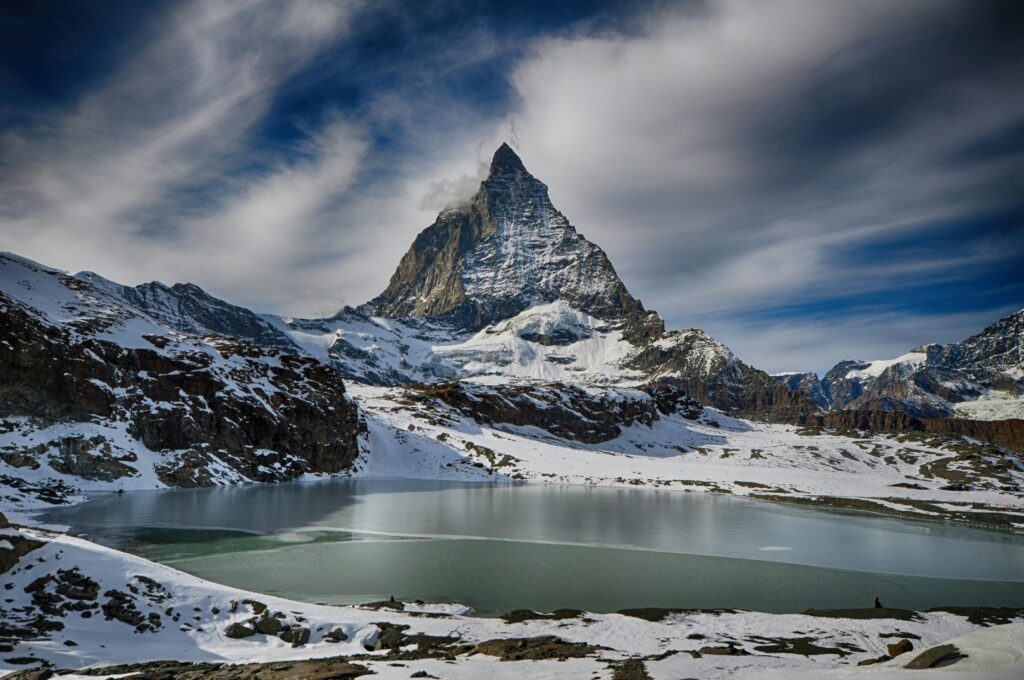
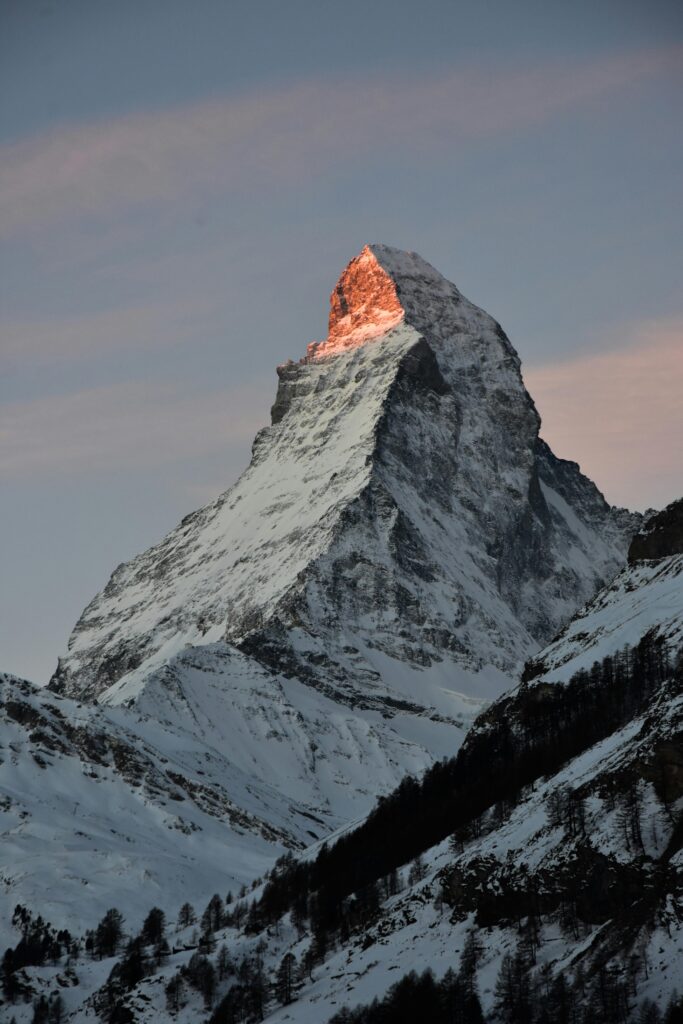
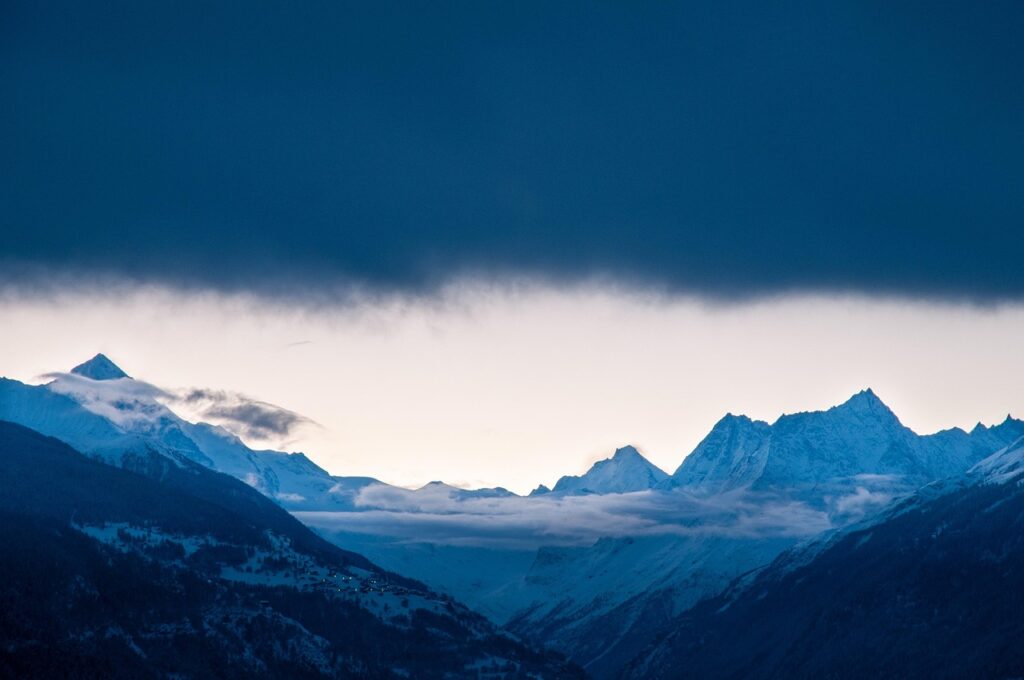
7. Dent Blanche
Dent Blanche (4,357 m) is a striking peak in the Pennine Alps, located in the Valais region of Switzerland. Its name means “White Tooth,” reflecting its sharp shape and often snow-covered appearance. Though less famous than the Matterhorn, it is highly prominent and remote. The classic route starts from the Dent Blanche Hut (3,507 m) and ascends via the south ridge, requiring experience in both rock and glacier terrain. The summit offers panoramic views of Weisshorn, Matterhorn, and Monte Rosa. It’s an excellent choice for climbers seeking a technical, less-crowded ascent. Due to its remote access and harsh conditions, it presents a serious alpine challenge. Dent Blanche remains a hidden gem among the great Swiss peaks.
8. Grand Combin
Grand Combin (4,314 m) is a massive glaciated peak in the Pennine Alps, located in the Valais region of Switzerland. Its highest point is the Combin de Grafeneire, surrounded by three other 4,000 m summits. The mountain is known for steep slopes, spectacular glaciers, and the danger of avalanches and falling seracs. The usual approach is from Bourg-St-Pierre, with the classic route passing through the Panossière Hut (2,641 m). Climbers must cross the Corbassière Glacier, which requires solid glacier travel skills. Due to its bulk and remote location, it offers a true expedition-like experience. Grand Combin is ideal for mountaineers seeking altitude, solitude, and a technical challenge.
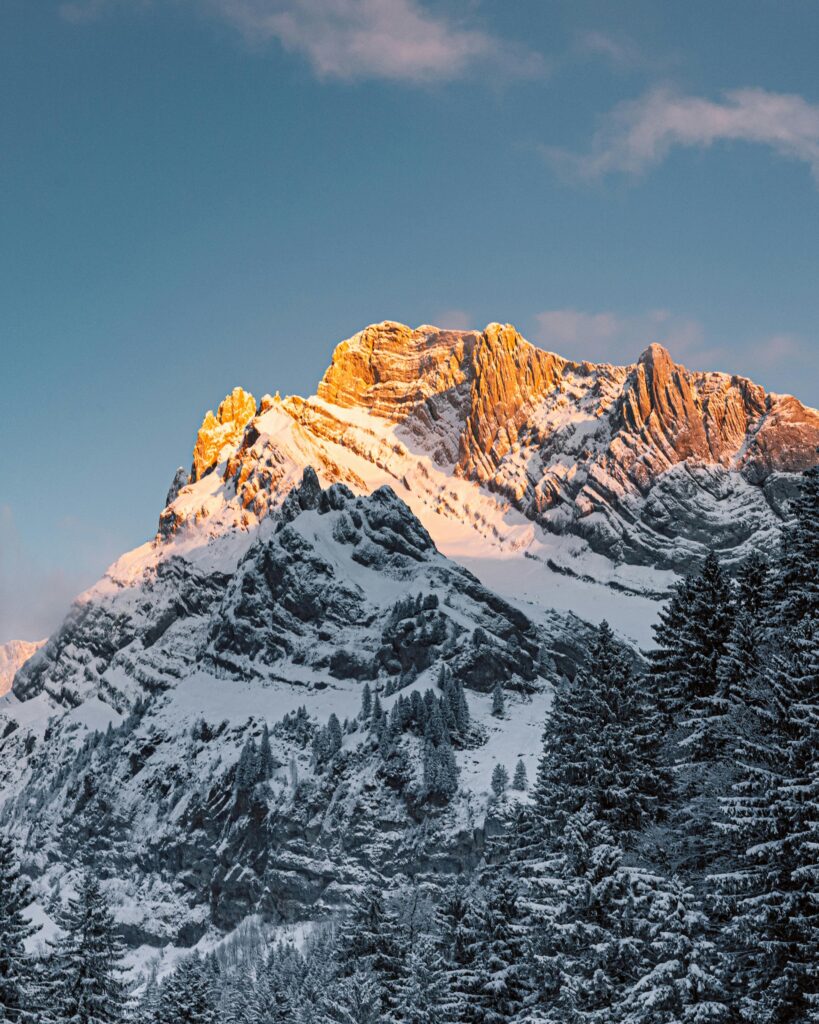
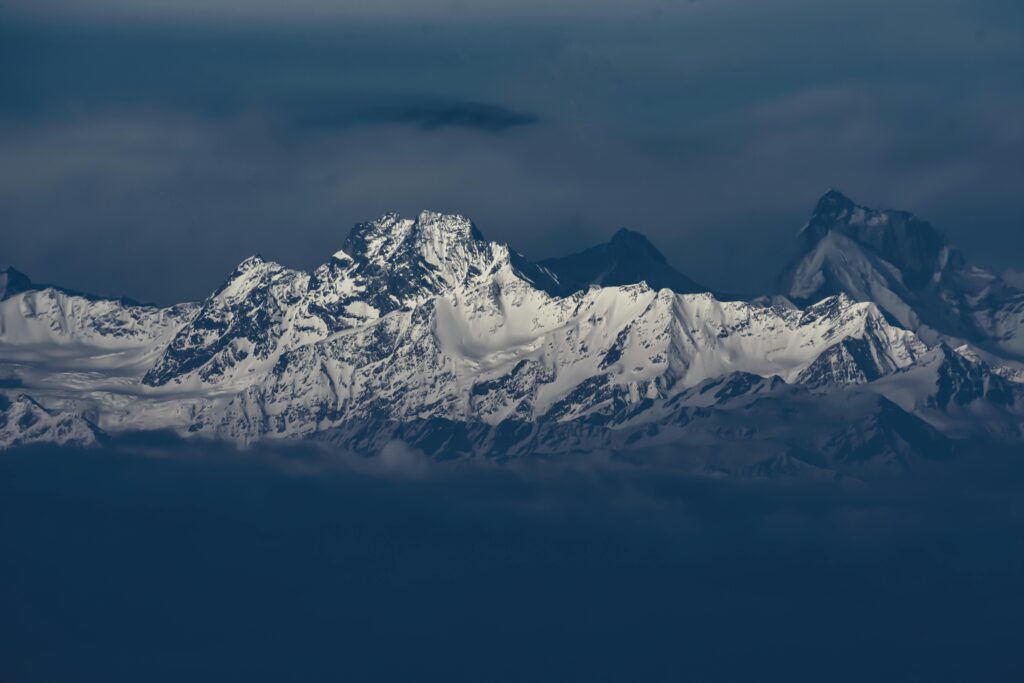
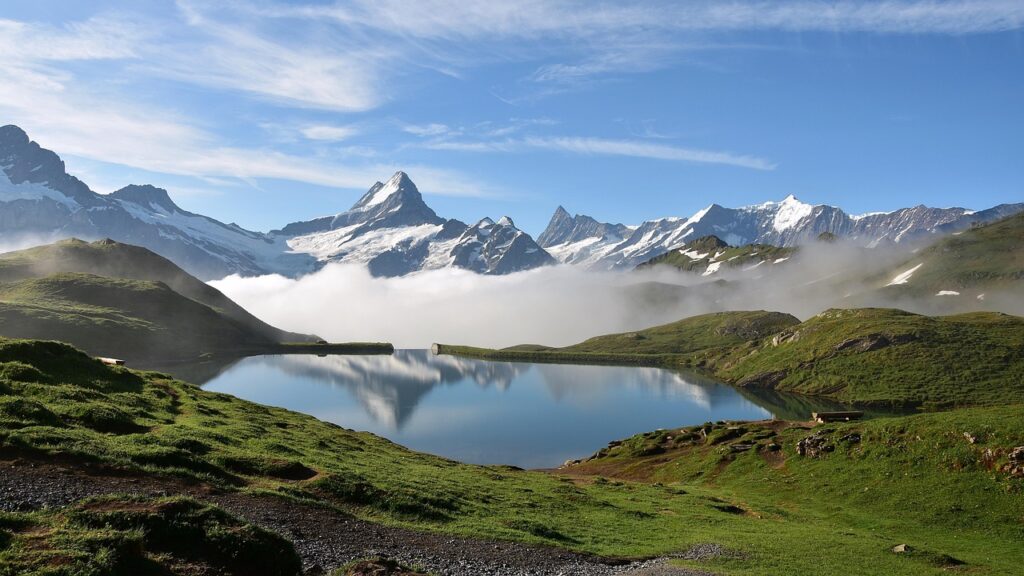
9. Finsteraarhorn
Finsteraarhorn (4,274 m) is the highest peak in the Bernese Alps and the tallest in northern Switzerland. Though less famous than other 4,000 m summits, it is highly prominent and impressively remote. Access is challenging, usually starting from the Finsteraarhorn Hut (3,048 m) after a long glacier approach. The standard route climbs the southwest flank and requires experience in glacier travel and mixed alpine terrain. The summit offers stunning views of the Aletsch Glacier, the largest in the Alps. Thanks to its central position, it is one of the most panoramic peaks in Switzerland. It attracts climbers seeking solitude, wilderness, and serious alpine challenge. Finsteraarhorn embodies the spirit of classic, pure alpinism.
10. Jungfrau
Jungfrau (4,158 m) is one of the best-known and most accessible 4,000-meter peaks in the Bernese Alps, Switzerland. It stands alongside Eiger and Mönch, forming a stunning trio above the Lauterbrunnen Valley. The classic ascent follows the Jungfraufirn Glacier from Mönchsjoch Hut or the Jungfraujoch – the highest railway station in Europe (3,454 m). While not extremely technical, the climb involves glacier crossings and requires proper gear. Jungfrau is part of a UNESCO World Heritage Site due to its extraordinary glacial landscape. The summit offers breathtaking views of the Aletsch Glacier and the central Alps. It’s ideal for intermediate mountaineers and is also a world-famous tourist destination. Jungfrau perfectly combines accessibility with authentic alpine beauty.
